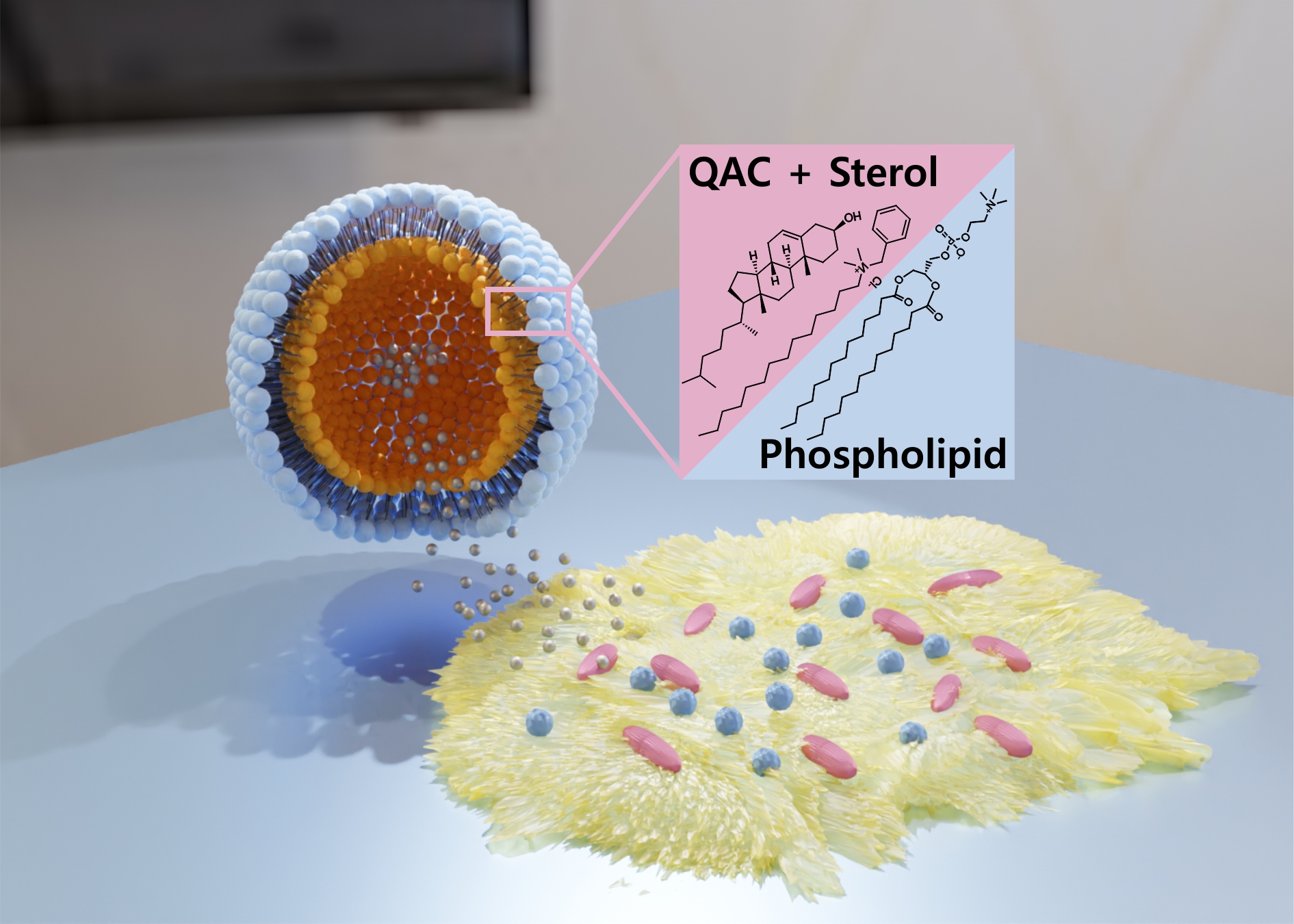Cationic Self-Assembled Vesicles
Self-assembly shines both in living organisms and in test tubes. Liposomes self-assembled from phospholipids have been a known viable drug delivery system for encapsulation and triggered release of a variety of molecules such as and antimicrobials. Besides liposomes, the amphiphilic quaternary ammonium compounds (QACs) are also able to self-assemble into cationic vesicles together with sterol molecules, and these vesicles are commonly called “quatsomes”. The cationic QAC molecules are effective antimicrobials towards a broad range of pathogens, while maintaining low toxicity at a relatively low cost. Using quatsomes as a new over conventional liposomes has great potential: the quatsomes, like liposomes, can be modified for targeted release of antibiotics and other molecules. They are easily dispersed in aqueous solutions and remain stable for months due to their highly cationic structure.
Our goal is to use quatsomes to encapsulate small antibacterial and antibiofilm agents for biofilm prevention, detection, and eradication. Quatsomes have been evaluated to be potent agents for bacterial biofilm eradication, and constructing a stable, small vesicle is essential for the antibiofilm application. We wish to (i) study how the chemical structures and stoichiometry of QACs and pairing sterols influences the vesicle membrane morphology from both chemical and biophysical perspectives, (ii) establish successful encapsulation and target-release procedures by modifying the quatsome bilayers, and (iii) evaluate the antibiofilm efficacy by microbial bioassays.
Our goal is to use quatsomes to encapsulate small antibacterial and antibiofilm agents for biofilm prevention, detection, and eradication. Quatsomes have been evaluated to be potent agents for bacterial biofilm eradication, and constructing a stable, small vesicle is essential for the antibiofilm application. We wish to (i) study how the chemical structures and stoichiometry of QACs and pairing sterols influences the vesicle membrane morphology from both chemical and biophysical perspectives, (ii) establish successful encapsulation and target-release procedures by modifying the quatsome bilayers, and (iii) evaluate the antibiofilm efficacy by microbial bioassays.
Recent group publications
- Du, C.; Woolcott, S.; Wahba, A. S.; Hamry, S.; Odette, W.; Thibodeaux, C.; Marchand, P.; Mauzeroll, J. Evaluation of Quatsome Morphology, Composition, and Stability for Pseudomonas aeruginosa Biofilm Eradication. Langmuir. 2024. 40, 3, 1623-1632
- Odette, W.; Mauzeroll, J. Formation of Oxidation- and Acid-Sensitive Assemblies from Sterols and a Quaternary Ammonium Ferrocene Derivative: Quatsome- and Onion-like Vesicles and Extended Nanoribbons. Langmuir 2022, 38, 14, 4396–4406.
- Odette, W.L.; Payne, N.A.; Khaliullin, R.Z.; Mauzeroll, J. Redox-Triggered Disassembly of Nanosize Liposomes Containing Ferrocene-Appended Amphiphiles. Langmuir 2019, 35(16), 5608-5616.
